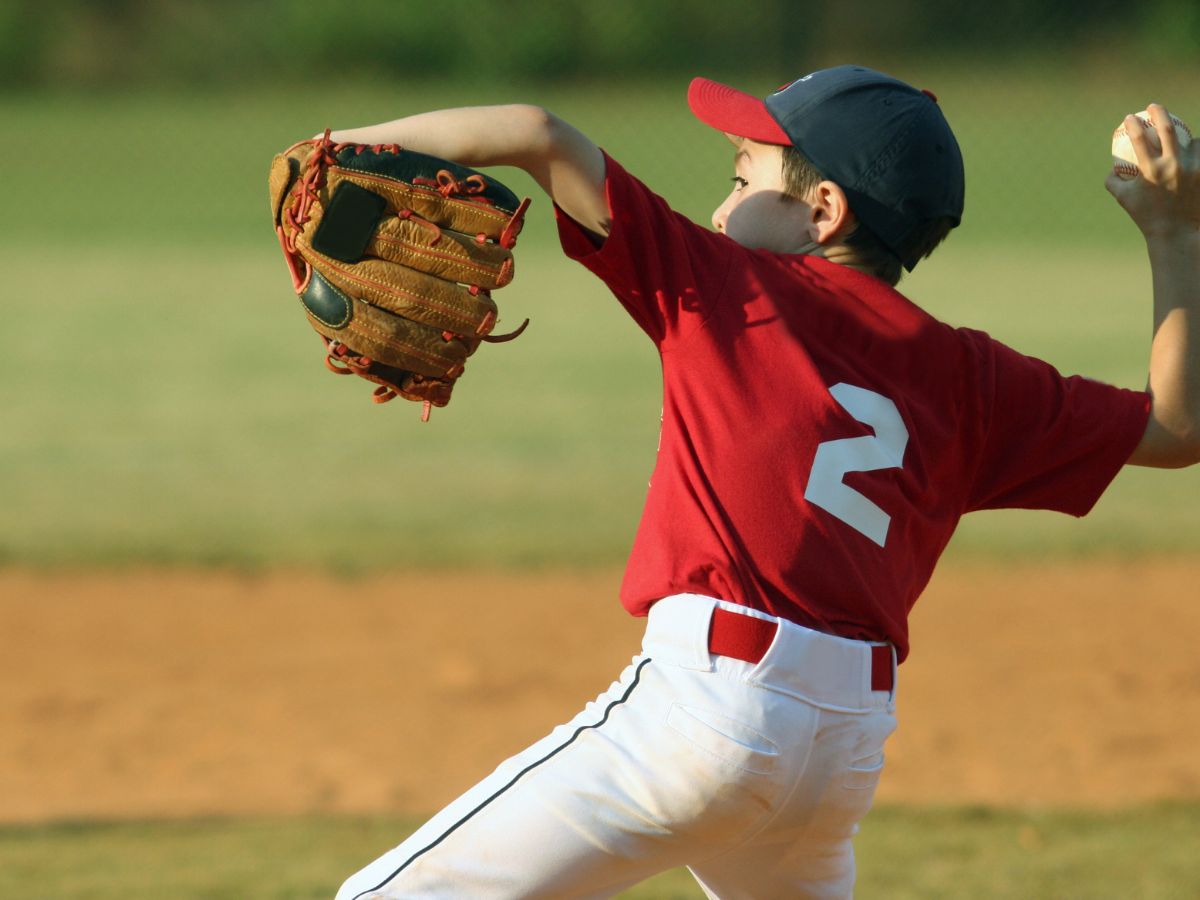
To throw a rising fastball pitch, grip the ball with your index and middle fingers on top and your thumb underneath, and apply pressure while releasing the ball with an upward motion. This causes the ball to spin and rise towards the batter.

The rising fastball pitch is a powerful weapon for pitchers seeking to fool batters with its unexpected elevation. By understanding the proper grip and technique, pitchers can effectively execute this challenging pitch. The rising fastball relies on the spin and upward force applied to the ball during release, resulting in the ball’s trajectory defying gravity as it approaches the batter.
We will discuss the step-by-step process of throwing a rising fastball pitch, including the grip, release, and techniques to enhance its effectiveness. Mastering this pitch can significantly enhance a pitcher’s repertoire and keep batters on their toes. So, let’s dive in and discover how to throw a rising fastball pitch with precision and finesse.
Contents Inside
The rising fastball pitch is a fascinating technique that relies on the principles of physics. By understanding the science behind it, pitchers can unlock the secrets of this powerful pitch. The key factors that contribute to the rise of the ball are a high release point, backspin, and grip.
When the ball is released with a high spin rate and backspin, it creates an air pressure differential that causes the ball to defy gravity. Additionally, proper mechanics are essential for generating maximum velocity. Pitchers must utilize their legs, hips, and upper body to generate speed and power.
By perfecting these mechanics and understanding the physics at play, pitchers can effectively throw a rising fastball pitch.
Mastering the grip and release of a rising fastball is essential for any pitcher. The optimal grip can vary based on individual preference and hand size. Fine-tuning the release point is crucial for generating the desired upward movement and deception.
To achieve maximum effect, pitchers should experiment with different grips and release points to find what works best for them. Improving control and accuracy can be achieved through consistent practice and focusing on proper mechanics. It is important to develop muscle memory and repetition to ensure a consistent release point.
Additionally, pitchers should pay attention to their balance and body positioning throughout the pitch delivery. By mastering the grip and release and refining these techniques, pitchers can enhance their effectiveness and add another weapon to their pitching repertoire.
To unlock the power in your legs and core, incorporating strengthening exercises is crucial. These exercises enhance leg drive and power, enabling you to throw a rising fastball pitch with greater force and accuracy. One effective method is core stability training, which generates explosive force by strengthening the muscles in your abdomen and back.
By focusing on your core, you can transfer energy from your lower body to your upper body, resulting in a more powerful pitch. Additionally, integrating proper body mechanics into your pitching motion is essential. This involves maintaining proper balance and alignment throughout your delivery, maximizing the potential of your leg and core strength.
By following these guidelines and consistently practicing the recommended exercises, you will be on your way to mastering the rising fastball pitch.
Developing effective pitching strategies involves analyzing the strengths and weaknesses of different pitch sequences. It’s crucial to understand the importance of location and changing speeds to keep batters off balance. By varying pitch types, locations, and speeds, you can increase your chances of success on the mound.
One strategy is to mix up pitch sequences to keep hitters guessing and prevent them from getting comfortable at the plate. Another tactic is to focus on hitting certain spots in the strike zone to exploit a batter’s weaknesses. The goal is to maximize your effectiveness as a pitcher and keep the opposing team off the base paths.
Developing a pre-pitch routine is crucial for mental preparedness before throwing a rising fastball pitch. Handling pressure situations requires staying calm and focused on the mound. Visualization techniques can help boost confidence and concentration, enabling pitchers to execute their pitches with precision.
By visualizing the successful outcome and feeling the motion of the pitch in their mind, pitchers can train themselves to stay mentally prepared and confident in high-pressure situations. This helps in maintaining focus and executing the pitch effectively. A pre-pitch routine combined with visualization can help pitchers stay mentally sharp throughout the game and improve their overall performance on the mound.

So, it is essential to incorporate mental preparation techniques into your training regimen to master the art of throwing a rising fastball pitch.
Building arm strength and endurance is crucial for throwing a rising fastball pitch effectively. To prevent injury, it’s important to start with proper warm-up and cool-down routines. Incorporating exercises like weightlifting, resistance band workouts, and plyometric drills can significantly improve arm strength.
Balancing the frequency of throwing sessions with adequate rest is essential to maintain optimal performance. Remember to listen to your body and gradually increase the intensity of your workouts. By following these effective exercises and taking the necessary precautions, you can develop the arm strength and endurance needed to confidently throw a rising fastball pitch.
To refine your rising fastball pitch, it is essential to design focused bullpen sessions. By incorporating situational drills, you can simulate game-like conditions and improve your performance. Seeking feedback from coaches and teammates is another crucial aspect for continuous improvement.
This enables you to gain valuable insights and make necessary adjustments to your pitching technique. Practicing with purpose allows you to develop control, accuracy, and speed while throwing a rising fastball pitch. So, make sure to devise specific exercises and drills that target the areas you want to improve.
By customizing your bullpen sessions and actively seeking feedback, you can enhance your rising fastball pitch and become a more formidable pitcher on the mound.
Analyzing and adjusting technique is crucial in improving your rising fastball pitch. Utilizing video analysis allows you to identify specific areas for improvement. By carefully studying your pitching mechanics, you can make necessary adjustments to fine-tune your delivery. Working with experienced pitching coaches further refines your technique, helping you achieve optimal results on the mound.
Their expertise allows them to provide valuable feedback and guidance, guiding you towards greater success. Dedication to practicing and perfecting your rising fastball will ultimately lead to enhanced performance. Take advantage of technological advancements and coaching support to continually refine your skills and propel your pitches to new heights.
With diligence and perseverance, you can master the art of throwing a rising fastball pitch.
Developing mental toughness and resilience is crucial for a pitcher’s success. Overcoming setbacks and maintaining a positive mindset are essential elements in the game of pitching. It’s important to stay confident and motivated throughout the season, even when facing challenges.
Building mental strength involves strategies such as visualization, goal setting, and positive self-talk. Visualizing success can help pitchers enhance their performance on the mound. Setting specific goals keeps them focused and motivated, providing a sense of direction. Incorporating positive self-talk creates a mindset of belief and confidence.

By cultivating these mental skills, pitchers can effectively handle pressure situations and maximize their potential. The mental game of pitching is just as important as the physical aspect. Developing mental toughness and resilience enables pitchers to perform at their best and throw a rising fastball pitch.
Enhancing recovery and injury prevention after throwing a rising fastball pitch is crucial to maintaining a pitcher’s performance. Implementing injury prevention exercises and strategies aids in avoiding potential injuries and improving overall recovery. These exercises can include stretching, strengthening, and conditioning routines designed specifically for pitchers.
Alongside physical exercises, it is essential to listen to your body and be aware of any signs of discomfort or pain. Seeking medical assistance when needed is vital to address any potential issues early on and prevent further damage. By following these proper post-pitching routines, pitchers can enhance their recovery, prevent injuries, and ensure they can continue throwing rising fastball pitches effectively.
A rising fastball pitch is thrown with backspin, causing it to defy gravity and appear to rise as it approaches the batter. By releasing the ball with a specific grip and arm speed, pitchers can achieve the illusion of a rising fastball that is difficult for batters to hit.
To throw a rising fastball pitch, focus on a high release point, a firm grip with your index and middle fingers along the seams, and a strong snap of the wrist and fingers at release. This combination of mechanics generates the necessary backspin to create the illusion of the ball rising.
For a more effective grip, place your fingertips across the seams rather than along them. This allows for better control and more consistent backspin. Experiment with different finger pressure and placement until you find a grip that feels comfortable and maximizes the rising effect on your fastball pitch.
While speed can play a role in the effectiveness of a rising fastball, it is not the main factor. The key lies in the backspin generated by the pitcher’s mechanics and grip. Focus on mastering the mechanics and achieving the desired spin, and speed will naturally come as you develop your pitching skills.
Mastering the rising fastball pitch is crucial for any aspiring baseball pitcher. By understanding the right grip, arm action, and release point, you can add an effective weapon to your pitching arsenal. Remember to focus on the fundamentals and practice regularly to develop the necessary coordination and strength.
Visualizing the trajectory of the pitch and targeting specific areas of the strike zone will greatly improve your accuracy and effectiveness. Don’t forget to take care of your arm and work on your overall physical fitness to maintain the stamina required for pitching.
With dedication, repetition, and proper technique, you can confidently throw a rising fastball pitch that will keep batters guessing and help lead your team to victory. So get out there, practice hard, and become the pitcher you dream of being! Your journey to mastering the rising fastball starts now.
Let’s Build
Contact us todayGet daily tips and tricks for making your best home.
2025 The base Ball Insider